ضخامت سنج اولتراسونیک چند حالته MT660 با استفاده از صفحه نمایش LCD رنگارنگ 320*240، می تواند نتیجه اندازه گیری واضح را در زیر نور کم و محیط شدید آفتاب به شما نشان دهد، تجربه بصری را تا حد زیادی بهبود بخشد. جعبه آلیاژ آلومینیوم منیزیم مهر و موم شده با طراحی ظریف، حجم کمتر، کیفیت بهتر به ویژه برای دفاع در برابر روغن، گرد و غبار در محیط بد طراحی شده است. با عملکرد هشدار هوشمند، هنگامی که فراتر از محدوده تنظیم باشد به طور خودکار هشدار میدهد و برای خواندن راحت است. می تواند تقاضای جمع آوری کارآمد آزمایش دقیق ضخامت چند نقطه مواد را برآورده کند. صفحه نمایش با دقت بالا 0.001 و ارتباط بلوتوث را پشتیبانی می کند. با حالت پوشش از طریق و حالت معمول، عملکرد منحصر به فرد آن برای آزمایش ضخامت از طریق پوشش، راه حل کارآمدی را برای آزمایش قطعه کار سطح پوشش داده شده یا مواد خوردگی ارائه می دهد. می تواند قطعه کار را مستقیماً بدون نیاز به خلاص شدن از شر پوشش سطح قبل از اندازه گیری اندازه گیری کند. به طور گسترده ای برای نظارت بر خطوط لوله مختلف تجهیزات تولید و درجه کاهش خوردگی مخازن تحت فشار در زمینه های نفت، شیمیایی، متالورژی، کشتی سازی، هوانوردی، هوا فضا و غیره استفاده می شود. همچنین می توان از آن برای اندازه گیری دقیق صفحات مختلف و قطعات ماشینکاری استفاده کرد. ابزار دقیق حرفه ای لازم برای بهبود راندمان تولید و نرخ صلاحیت و همچنین صرفه جویی در هزینه است.
Function & application
Capable of performing measurements on a wide range of material, including metals, plastic, ceramics, composites, epoxies, glass and other ultrasonic wave well-conductive materials.Transducer models are available for special application, including for coarse grain material and high temperature applications.
Working Principle
The digital ultrasonic thickness gauge determines the thickness of a part or structure by accurately measuring the time required for a short ultrasonic pulse generated by a transducer to travel through the thickness of the material, reflect from the back or inside surface, and be returned to the transducer. The measured two-way transit time is divided by two to account for the down-and-back travel path, and then multiplied by the velocity of sound in the material. The result is expressed in the well-known relationship: H=v×t/2
Where:
H-Thickness of the test piece.
v-Sound Velocity in the material.
t-The measured round-trip transit time.
Working Conditions
Operating Temperature: -20℃~+60℃;
Storage Temperature:-30℃~+70℃
Relative Humidity ≤90%;
The surrounding environment should avoid of vibratin, strong magentic field, corrosive medium and heavy dust.
Instrument Features
Multi-mode: Pulse-Echo mode (P-E mode) and Echo-Echo mode (E-E mode). In Echo-Echo mode, it can test the wall thickness eliminating paint or coating thickness.
Wide measuring range:Pulse-Echo mode: (0.65~600)mm (in Steel). Echo-Echo mode: (2.5~100)mm
V-Path correction to compensate the nonlinearity of the probe
Color TFT display (320×240 TFT LCD) with adjustable backlight, allow the user to work at worksites with low visibility.
Non-volatile memory can store 100 groups of test thickness. One hundred records max for each group.
Two AA size alkaline batteries as the power source. Continuous operating period of no less than 100 hours (default brightness setting). Display Standby and Auto Power Off functions to save power.
With internal Bluetooth module, it can print test report wirelessly.
USB 2.0 communication port. Online transfer of the measured data to PC via USB.
Operating Method and Attentions
Measuring pipe and tubing.
When measuring a piece of pipe to determine the thickness of the pipe wall, orientation of the transducers is important. If the diameter of the pipe is larger than approximately 4 inches, measurements should be made with the transducer oriented so that the gap in the wearface is perpendicular (at right angle) to the long axis of the pipe. For smaller pipe diameters, two measurements should be performed, one with the wearface gap perpendicular, another with the gap parallel to the long axis of the pipe. The smaller of the two displayed values should then be taken as the thickness at that point.
Measuring hot surfaces
The velocity of sound through a substance is dependant upon its temperature. As materials heat up, the velocity of sound through them decreases. In most applications with surface temperatures less than about 100℃, no special procedures must be observed. At temperatures above this point, the change in sound velocity of the material being measured starts to have a noticeable effect upon ultrasonic measurement. At such elevated temperatures, it is recommended that the user perform a calibration procedure on a sample piece of known thickness, which is at or near the temperature of the material to be measured. This will allow the gauge to correctly calculate the velocity of sound through the hot material.
When performing measurements on hot surfaces, it may also be necessary to use a specially constructed high-temperature transducer. These transducers are built using materials which can withstand high temperatures. Even so, it is recommended that the probe be left in contact with the surface for as short a time as needed to acquire a stable measurement. While the transducer is in contact with a hot surface, it will begin to heat up, and through thermal expansion and other effects, may begin to adversely affect the accuracy of measurements.
Measuring laminated materials.
Laminated materials are unique in that their density (and therefore sound-velocity) may vary considerably from one piece to another. Some laminated materials may even exhibit noticeable changes in sound-velocity across a single surface. The only way to reliably measure such materials is by performing a calibration procedure on a sample piece of known thickness. Ideally, this sample material should be a part of the same piece being measured, or at least from the same lamination batch. By calibrating to each test piece individually, the effects of variation of sound-velocity will be minimized.
An additional important consideration when measuring laminates, is that any included air gaps or pockets will cause an early reflection of the ultrasound beam. This effect will be noticed as a sudden decrease in thickness in an otherwise regular surface. While this may impede accurate measurement of total material thickness, it does provide the user with positive indication of air gaps in the laminate.
Suitability of materials
Ultrasonic thickness measurements rely on passing a sound wave through the material being measured. Not all materials are good at transmitting sound. Ultrasonic thickness measurement is practical in a wide variety of materials including metals, plastics, and glass. Materials that are difficult include some cast materials, concrete, wood, fiberglass, and some rubber.
Couplants
All ultrasonic applications require some medium to couple the sound from the transducer to the test piece. Typically a high viscosity liquid is used as the medium. The sound used in ultrasonic thickness measurement does not travel through air efficiently.
A wide variety of couplant materials may be used in ultrasonic gauging. Propylene glycol is suitable for most applications. In difficult applications where maximum transfer of sound energy is required, glycerin is recommended. However, on some metals glycerin can promote corrosion by means of water absorption and thus may be undesirable. Other suitable couplants for measurements at normal temperatures may include water, various oils and greases, gels, and silicone fluids. Measurements at elevated temperatures will require specially formulated high temperature couplants.
Inherent in ultrasonic thickness measurement is the possibility that the instrument will use the second rather than the first echo from the back surface of the material being measured while in standard pulse-echo mode. This may result in a thickness reading that is TWICE what it should be. The Responsibility for proper use of the instrument and recognition of these types of phenomenon rests solely with the user of the instrument.
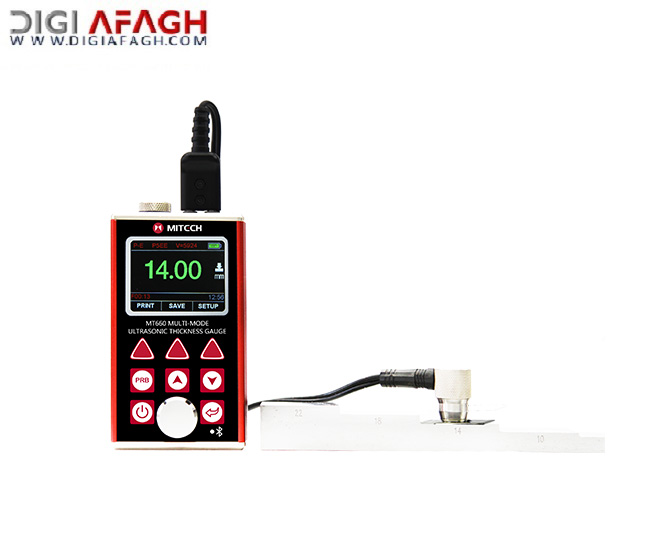




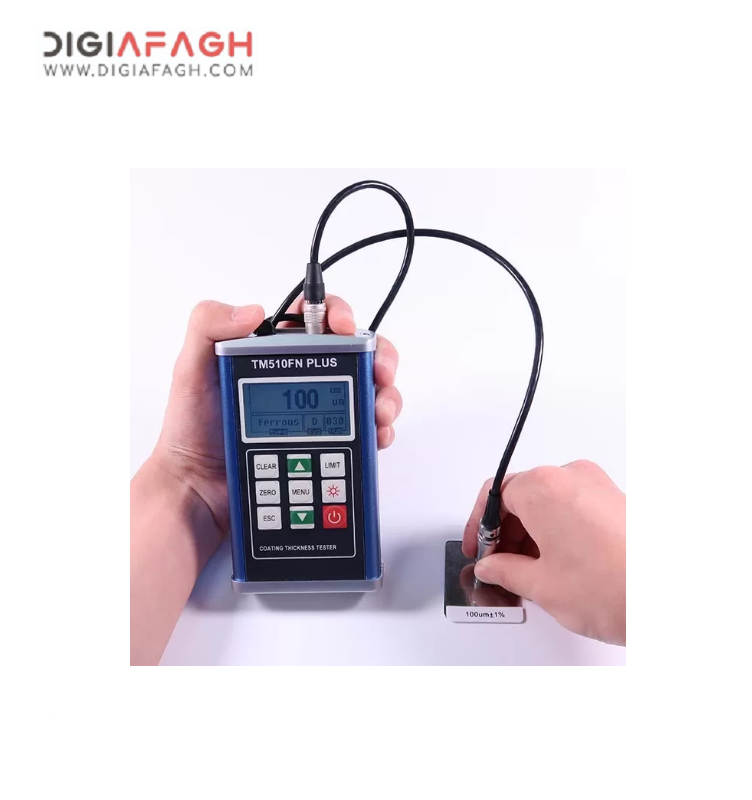
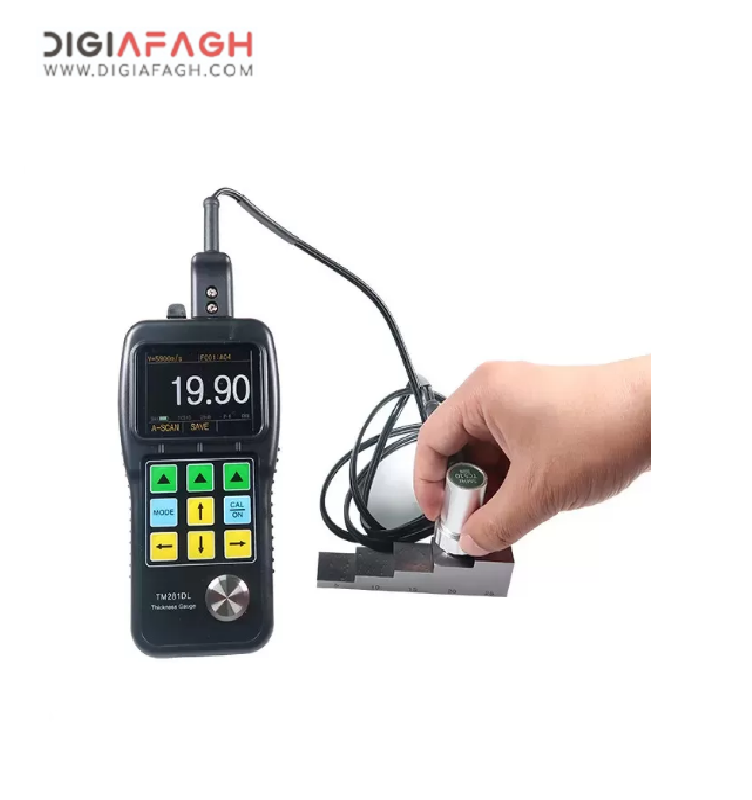
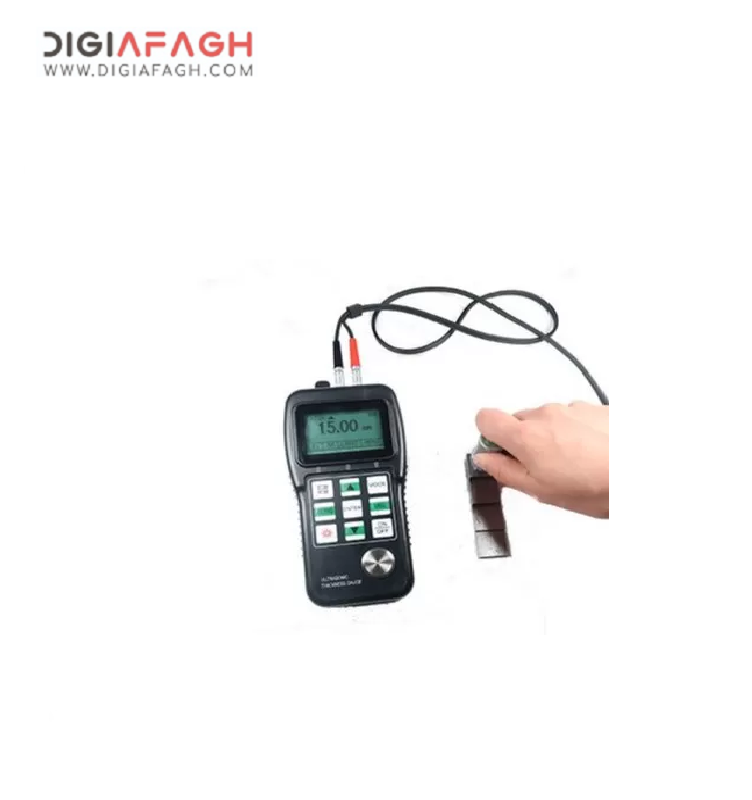
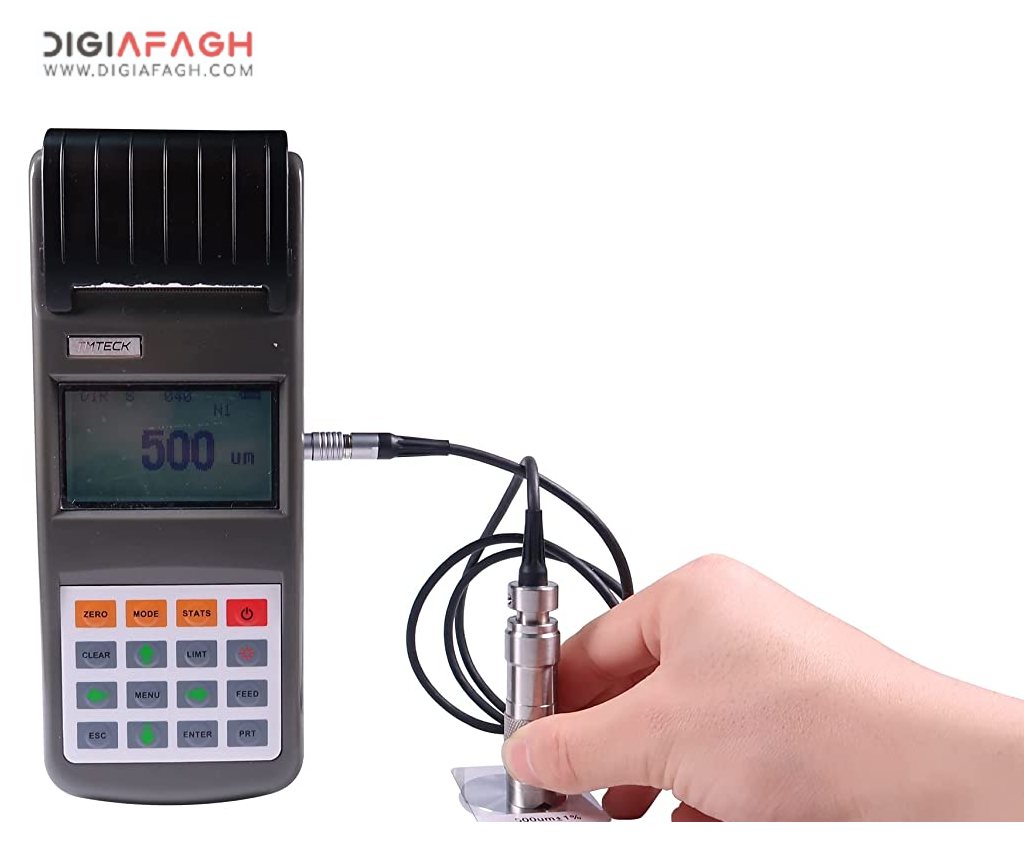
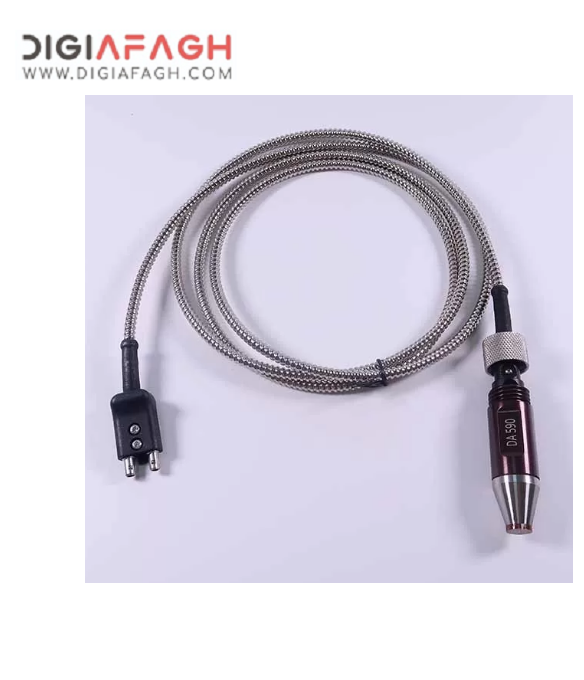
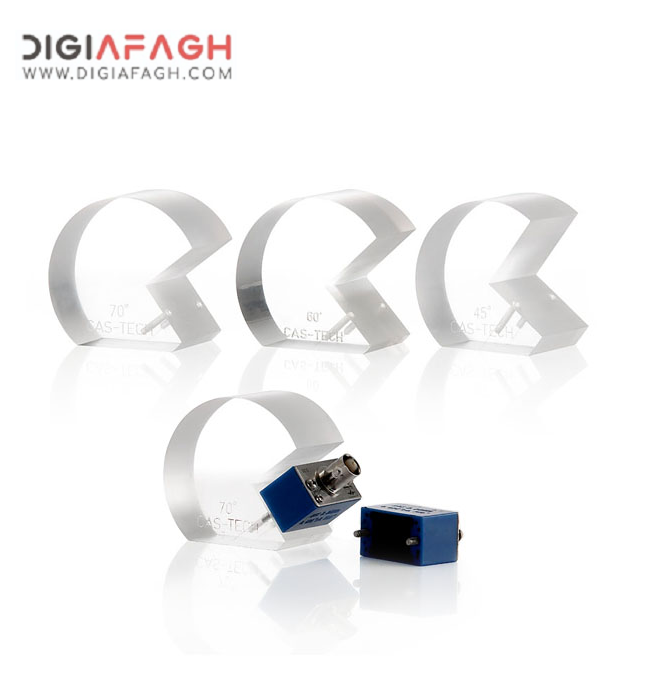
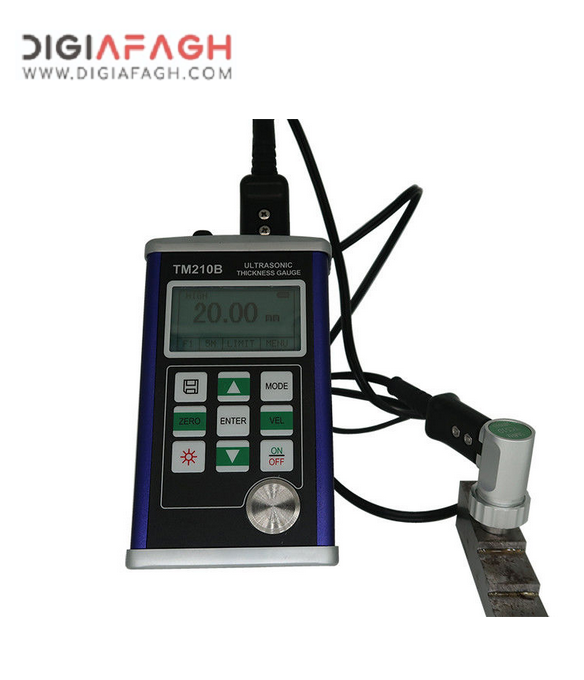
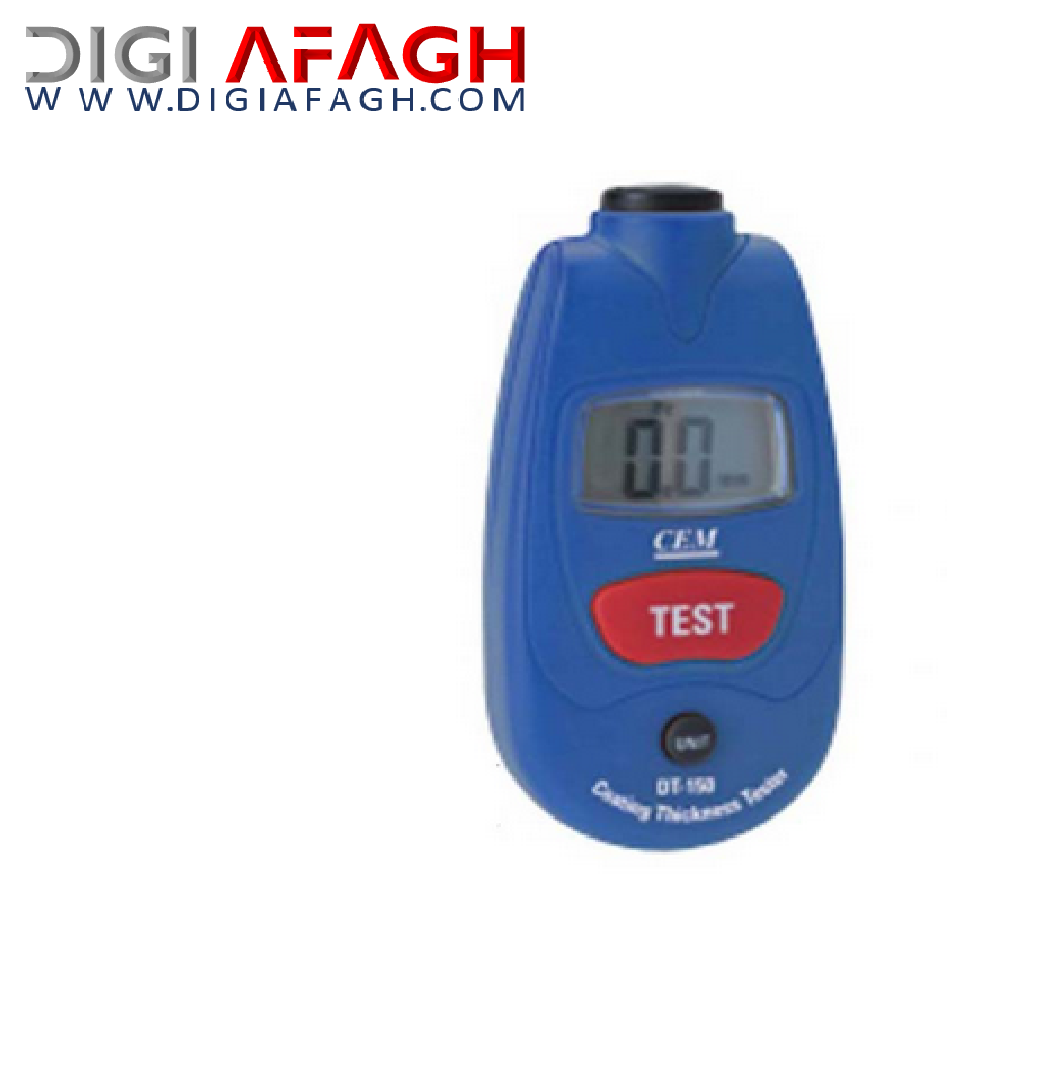
دیدگاه خود را در مورد این کالا وارد نمایید.